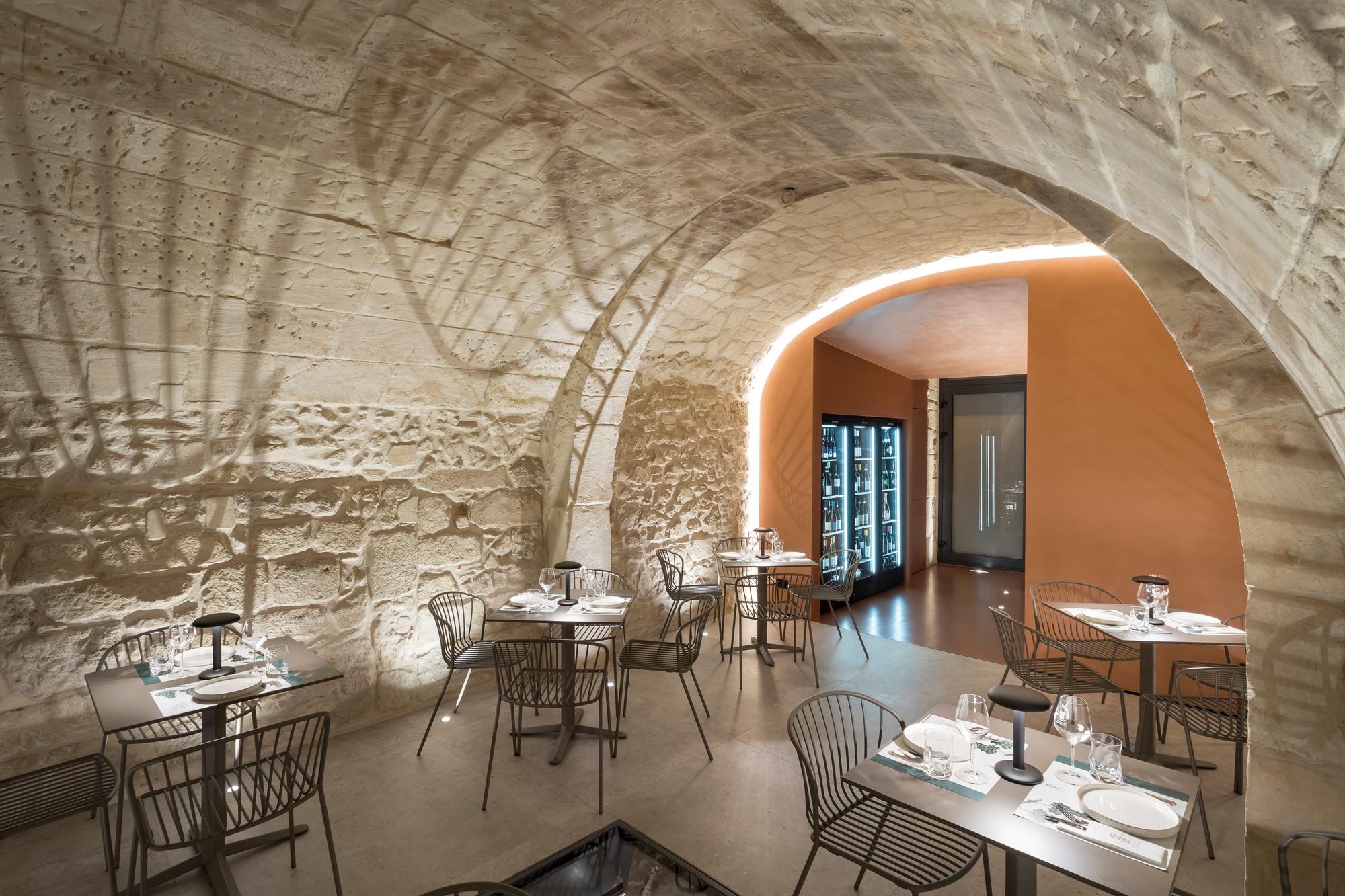The new Enoteca, which is much more than a venue, aims to be an exclusive meeting point, elegant but at the same time welcoming and informal, in which to embark on a multi-sensory journey around food and wine.
1954 – Cantine Universali was established in the historical centre of Ragusa and is located in the commercial premises of two distinct buildings, separated both structurally and in terms of construction period, which overlook two streets at slightly different heights. The entrance opens into the premises of the building at the lower level, along the main street, introducing the retail area. This is characterised by the presence of the counter and the full-height wooden bottle racks, in a warm, welcoming, vibrant atmosphere. Labels gleam between oak and walnut, on a mineral floor of local stone slabs. From here, the conformation of the Enoteca can be perceived: a succession of irregular, almost vernacular rooms, carved out of the walls of existing buildings, on ascending floors, connected by small groups of steps. The stone slabs on the floor cover the entire route, through the various rooms and their steps, which appear like small waterfalls between communicating lakes. From the contemporary, urban, extroverted mood of the shop, one enters rooms that gradually become quieter, more material, more introspective. The wood and copper-clad walls are replaced by the stone block masonry of the barrel vaults, bathed by the grazing light of the spotlights on the floor, which enhance the rough, irregular surface. Wooden furniture is replaced by slender, sculptural bottle holders made of anthracite-coloured metal bars. From contemporary to antique, from present to past. In this way, the journey through space is also a journey through time. The passage through these two dimensions is further emphasised by the inner courtyard, which is covered by a sheet of glass to allow natural light to filter into the cavity, a source of life for lush vegetation. The last room, the old warehouse, is used for tasting and is furnished in an essential manner. Slender tables and chairs in metal weaves reveal the materiality of the vaulted room. The light on the floor passes through them creating abstract patterns of shadows on the surface of the vault, which proudly shows the signs of time and its many alterations. Striking is the floor void, an ancient cistern, reused as a cellar for the finest wines, and closed by extra-clear tempered laminated glass.
Completing the composition is the volume at the back, the closing head of the entire project, a copper-coloured service block housing other refrigerated cellars, the air conditioning system and the bathrooms. A further leap from one dimension to another, a total immersion in colour before reaching the toilets, where the dominant material of the hall, stone in its various forms, reappears.
The most significant intervention from a structural point of view was the creation of the central opening in the retail area, by means of metal hoops, precisely to create the visual connection between all the areas of the project. In this way it was possible to achieve the smoothest and most linear route possible through the different project settings
which progressively lead from contemporary to antique, from present to past, in a succession of changing scenarios.
The bottles in the entrance/retail area have been conceived as dense three-dimensional textures. The wine emerges from the pores of an enveloping, strongly structured wooden membrane. The lighting is part of the project surfaces, integrated between the compositional elements. It shows, enhances, sometimes conceals, sinuously follows the lines of the project, caresses.
Attention to detail, the combination of materials, the balance of forms, the harmonisation of light. These are just a few of the lofty ambitions that have accompanied the entire design and construction process for the creation of a true ‘wunderkammer’ in which the guest can experience the most authentic essence of the products, one that is also made up of archetypal images, ancestral memories, traditions far away in time, echoes of lived stories.
This website uses cookies so that we can provide you with the best user experience possible. Cookie information is stored in your browser and performs functions such as recognising you when you return to our website and helping our team to understand which sections of the website you find most interesting and useful.


